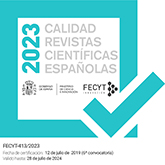Comparative study of skipjack tuna Katsuwonus pelamis (Scombridae) fishery stocks from the South Atlantic and western Indian oceans
DOI:
https://doi.org/10.3989/scimar.04804.22CKeywords:
oceanic fisheries, inter-regional oceans, ENSO, teleconnections, tRFMOs, bonitoAbstract
The skipjack tuna, Katsuwonus pelamis, inhabits tropical and subtropical oceans the world over, and contributes substantially to total tuna catches. Both fishing pressure and anthropic influences affect skipjack populations, impacting on economic returns and investment. The present study analyses and compares spatial time series of catch and catch per unit effort (CPUE), of pole-and-line fishing of skipjack tuna from Brazil, South Africa and the Maldives. Both regional and inter-regional analyses were conducted for the period 1970-2014 in order to ultimately investigate potential associations between these fisheries, climatic conditions and the El Niño Southern Oscillation (ENSO). Correlation tests and spatial mapping tools were used. From 2004 to 2011, South African skipjack catches correlated positively with Brazilian ones and negatively with Maldivians. CPUEs from the Brazilian and Maldivian skipjack fisheries showed a significant positive correlation in the period 1982-1993. Yearly catches from all regions were strongly associated with the Northern Oscillation Index (p < 0.001), an ENSO index. This study reflects an effort to articulate an inter-regional appraisal of skipjack pole-and-line fisheries embedded in the context of a globally changing climate, in the face of which emerging economies are the most vulnerable. Evidence of common patterns influencing these fisheries should encourage international South-South cooperative management and understanding of the resource.
Downloads
References
Abdallah P.R., Sumaila U. 2007. An historical account of Brazilian Public Policy on Fisheries Subsidies. Mar. Pol. 31: 444-450. https://doi.org/10.1016/j.marpol.2007.01.002
Adam M.S., Sibert J.R. 2002. Population dynamics and movements of skipjack tuna (Katsuwonus pelamis) in the Maldivian fishery: analysis of tagging data from an advection-diffusion-reaction model. Aquat. Living Resour. 15: 13-23. https://doi.org/10.1016/S0990-7440(02)01155-5
Allison E.H., Perry A.L., Badjeck M-C., et al. 2009. Vulnerability of national economies to the impacts of climate change on fisheries. Fish. Fish. 10: 173-196. https://doi.org/10.1111/j.1467-2979.2008.00310.x
Andrade H.A. 2003. The relationship between the skipjack tuna (Katsuwonus pelamis) fishery and seasonal temperature variability in the South-Western Atlantic. Fish. Oceanogr. 12: 10-18. https://doi.org/10.1046/j.1365-2419.2003.00220.x
Andrade H.A., Tozetto A.L., Santos J.A.T. 2005. The effect of environmental factors and of the fishermen strategy on the Skipjack tuna (Katsuwonus pelamis) CPUE in the Southwest Atlantic. Col. Vol. Sci. Pap. ICCAT 58: 350-358.
Andrade H.A., Pereira M.D., Mayer F.P. 2007. Alternative methods for calculating catch-per-unit-effort for skipjack tuna (Katsuwonus pelamis) caught in the Southwestern Atlantic Ocean. Braz. J. Aquat. Sci. Technol. 11: 63-66. https://doi.org/10.14210/bjast.v11n2.p63-66
Andrade H.A., Guimarães-Silva A.A., Batista C.H.O. 2015. Catch composition of the baitboat fishery in the Southwestern Atlantic. Col. Vol. Sci. Pap. ICCAT 71: 317-324.
Arrizabalaga H., Dufour F., Kell L., et al. 2014. Global habitat preferences of commercial valuable tuna. Deep Sea Res. Part II: Top. Stud. Oceanogr. 113: 102-112. https://doi.org/10.1016/j.dsr2.2014.07.001
Belhabib D., Mendy A., Subah Y. et al. 2016. Fisheries catch under-reporting in The Gambia, Liberia and Namibia, and the three Large Marine Ecosystems which they represent. Environ. Dev. 17: 157-174. https://doi.org/10.1016/j.envdev.2015.08.004
Blasiak R., Spijkers J., Tokunaga K., et al. 2017. Climate change and marine fisheries: developed countries top global index of vulnerability. PLoS ONE 12: e0179632. https://doi.org/10.1371/journal.pone.0179632
Campos E.J.D., Miller J.L., Müller T.J., et al. 1995. Physical Oceanography of the Southwest Atlantic Ocean. Oceanography 8: 87-91. https://doi.org/10.5670/oceanog.1995.03
Castello J.P., Habiaga R.P. 1989. The skipjack fishery in Southern Brazil. Col. Vol. Sci. Pap. ICCAT 30: 6-19.
Cushing D.H. 1975. Marine ecology and fisheries. Cambridge Univ. Press, Cambridge, 278 pp.
Dong B., Sutton R.T., Scaife A.A. 2006. Multidecadal modulation of El Ni-o-Southern Oscillation (ENSO) variance by Atlantic Ocean sea surface temperatures. Geophys. Res. Lett. 33: L08705. https://doi.org/10.1029/2006GL025766
Dueri S., Bopp L., Maury O. 2014. Projecting the impacts of climate change on skipjack tuna abundance and spatial distribution. Glob. Change Biol. 20: 742-753. https://doi.org/10.1111/gcb.12460
Fonteneau A. 1986. Eléments relatifs à l'Effort de Pêche exercé sur le Listao de l'Atlantique (Katsuwonus pelamis) et Calcul d'Indices d'Effort Spécifiques. In: Proceedings of the ICCAT conference on the international skipjack year program: 21-29 Jun 1983, Tenerife, Spain. ICCAT, Madrid, pp. 127-139.
Fonteneau A. 2003. A comparative overview of skipjack fisheries and stocks worldwide. In: Proceedings of the 16th Meeting of the Standing Committee on Tuna and Billfish, 9-16 July 2003. Mooloolaba, Australia. SPC, Noumea, 15 pp.
Gadgil S. 2003. The Indian monsoon and its variability. Annu. Rev. Earth Planet. Sci. 31: 429-467. https://doi.org/10.1146/annurev.earth.31.100901.141251
Govinden R., Jauhary R., Filmalter J., et al. 2013. Movement behavior of skipjack (Katsuwonus pelamis) and yellowfin (Thunnus albacares) tuna at anchored fish aggregating devices (FADs), in the Maldives, investigated by acoustic telemetry. Aquat. Living Resour. 26: 69-77. https://doi.org/10.1051/alr/2012022
Hafiz A., Anderson R.C. 1994. The Maldivian tuna fishery - an update. In: Proceedings of the 5th Expert Consultation on Indian Ocean Tunas: 4-8 Oct 1993, Malé, Seychelles. ITPT, Colombo, pp. 30-33.
International Commission for the Conservation of Atlantic Tunas (ICCAT). 2014a. Task II - Catch & Effort (T2CE). [Database on the Internet]: ICCAT. http://www.iccat.org/en/t2ce.asp
International Commission for the Conservation of Atlantic Tunas (ICCAT). 2014b. Report of the 2014 ICCAT East and West Atlantic Skipjack stock assessment meeting: 23 Jun - 1 Jul 2014, Dakar, Senegal. ICCAT, Madrid, 98 pp.
International Commission for the Conservation of Atlantic Tunas (ICCAT). 2017. Report of the 2017 Standing Committee on Research and Statistics (SCRS): 2-6 Oct 2017, Madrid, Spain. ICCAT, Madrid, 465 pp.
Indian Ocean Tuna Commission (IOTC). 2010. Declining catches of Skipjack in the Indian Ocean - Observations from the Maldives. Document from the 12th Meeting of the Working Party on Tropical Tunas (WPTT): 18-25 Oct 2010, Victoria, Seychelles. IOTC, Victoria, 2 pp.
Indian Ocean Tuna Commission (IOTC). 2015. Résumé de l'état des thons et des espèces apparentées sous mandat de la CTOI, ainsi que des espèces affectées par les pêcheries de la CTOI. [Sl.]: IOTC. http://www.iotc.org/fr/science/résumé-de-létat-des-stocks
Indian Ocean Tuna Commission (IOTC). 2016. IOTC-2016-DATASETS-CESurface. [Database on the Internet]: IOTC. http://iotc.org/documents/ce-purse-seine-and-bait-boat
Indian Ocean Tuna Commission (IOTC). 2017. Review of the statistical data and fishery trends for tropical tunas. Document from the 19th Meeting of the Working Party on Tropical Tunas (WPTT): 17-22 Oct 2017, Mahé, Seychelles. IOTC, Victoria, 47 pp.
International Seafood Sustainability Foundation (ISSF). 2018. Status of the world fisheries for tuna. ISSF Tech Rep 2018-02. International Seafood Sustainability Foundation, Washington, 101 pp.
Kahle D., Wickham H. 2013. Ggmap: Spatial Visualization with ggplot2. The R J. 5: 144-161. https://doi.org/10.32614/RJ-2013-014
Kumar P.S., Pillai G.N., Majusha U. 2014. El Nino Southern Oscillation (ENSO) impact on tuna fisheries in Indian Ocean. SpringerPlus 3: 591. https://doi.org/10.1186/2193-1801-3-591
Koya K.P.S., Joshi K.K., Abdussamad E.M., et al. 2012. Fishery, biology and stock structure of skipjack tuna, Katsuwonus pelamis (Linnaeus, 1758) exploited from Indian waters. Indian J. Fish. 59: 39-47.
Legendre P., Oksanen K., ter Braak C.J.F. 2011. Testing the significance of canonical axes in redundancy analysis. Methods Ecol. Evol. 2: 269-277. https://doi.org/10.1111/j.2041-210X.2010.00078.x
McIlroy D. 2015. Packaged for R by Ray Brownrigg, Thomas P Minka and transition to Plan 9 codebase by Roger Bivand. mapproj: Map Projections. R package version 1.2-4. https://CRAN.R-project.org/package=mapproj
Medley P.A.H., Ahusan M., Adam M.S. 2017. Bayesian CPUE Standardization Model for Maldives Pole and Line Skipjack Tuna 1970-2015. Document from the 19th Working Party on Tropical Tunas (WPTT). 17-22 Oct 2017, Mahé, Seychelles. IOTC, Victoria, 7 pp.
Ménard F., Fonteneau A., Gaertner D., et al. 2000. Exploitation of small tunas by a purse-seine fishery with fish aggregating devices and their feeding ecology in an eastern tropical Atlantic ecosystem. ICES J. Mar. Sci. 57: 525-530. https://doi.org/10.1006/jmsc.2000.0717
Meneses de Lima J.H. 2006. Padronização do índice de abundância e avaliação do estoque de bonito listrado, (Katsuwonus pelamis Linnaeus, 1758), do Atlântico Ocidental. Ph.D. thesis. São Carlos University, São Carlos, 214 pp.
Meneses de Lima J.H., Lin C.F., Menezes A.A.S. 2000. As pescarias brasileiras de bonito-listrado com vara e isca-viva, no Sudeste e Sul do Brasil, no perodo de 1980 a 1998. Bol. Téc. Cient. Tamandaré 8: 7-99.
Ministry of Fisheries and Agriculture (MoFA). 2013. Maldives National Report submitted to the Scientific Committee of the Indian Ocean Tuna Commission. Ministry of Fisheries and Agriculture, Malé, 15 pp.
Ministry of Planning, Human Resources and Environment (MPHRE). 2016. Statistical year book of Maldives 2016. Ministry of Planning, Human Resources and Environment, Malé, Republic of Maldives.
Nicholson S.E. 1997. An analysis of the ENSO signal in the Tropical Atlantic and Western Indian Oceans. Int. J. Climatol. 17: 345-375. https://doi.org/10.1002/(SICI)1097-0088(19970330)17:4<345::AID-JOC127>3.0.CO;2-3
Ormaza-González F.I., Mora-Cervetto A., Bermúdez-Martínez R.M. 2016. Relationship between tuna catch and variable frequency oceanographic conditions. Adv. Geosc. 42: 83-90. https://doi.org/10.5194/adgeo-42-83-2016
Popova E., Yool A., Byfield V., et al. 2016. From global to regional and back again: common climate stressors of marine ecosystems relevant for adaptation across five ocean warming hotspots. Glob. Change Biol. 22: 2038-2053. https://doi.org/10.1111/gcb.13247
Ricker W.E. 1954. Stock and recruitment. J. Fish. Res. Board Can. 11: 559-623. https://doi.org/10.1139/f54-039
Schwing F.B., Murphree T., Green P.M. 2002. The Northern Oscillation Index (NOI): a new climate index for the northeast Pacific. Prog Oceanogr. 53: 115-139. https://doi.org/10.1016/S0079-6611(02)00027-7
Shainee M., Leira B.J. 2011. On the cause of premature FAD loss in the Maldives. Fish. Res. 109: 42-53. https://doi.org/10.1016/j.fishres.2011.01.015
Wang X., Chen Y., Truesdell S., et al. 2014. The Large-Scale Deployment of Fish Aggregation Devices Alters Environmentally- Based Migratory Behavior of Skipjack Tuna in the Western Pacific Ocean. PLoS ONE 9: e98226. https://doi.org/10.1371/journal.pone.0098226
Yesaki M., Waheed A. 1992. Results of the tuna tagging programme conducted in the Maldives during 1990. Indo-Pacific Tuna Development and Management Programme. FAO-UNDP, 23 pp.
Published
How to Cite
Issue
Section
License
Copyright (c) 2019 Consejo Superior de Investigaciones Científicas (CSIC)

This work is licensed under a Creative Commons Attribution 4.0 International License.
© CSIC. Manuscripts published in both the printed and online versions of this Journal are the property of Consejo Superior de Investigaciones Científicas, and quoting this source is a requirement for any partial or full reproduction.All contents of this electronic edition, except where otherwise noted, are distributed under a “Creative Commons Attribution 4.0 International” (CC BY 4.0) License. You may read here the basic information and the legal text of the license. The indication of the CC BY 4.0 License must be expressly stated in this way when necessary.
Self-archiving in repositories, personal webpages or similar, of any version other than the published by the Editor, is not allowed.














